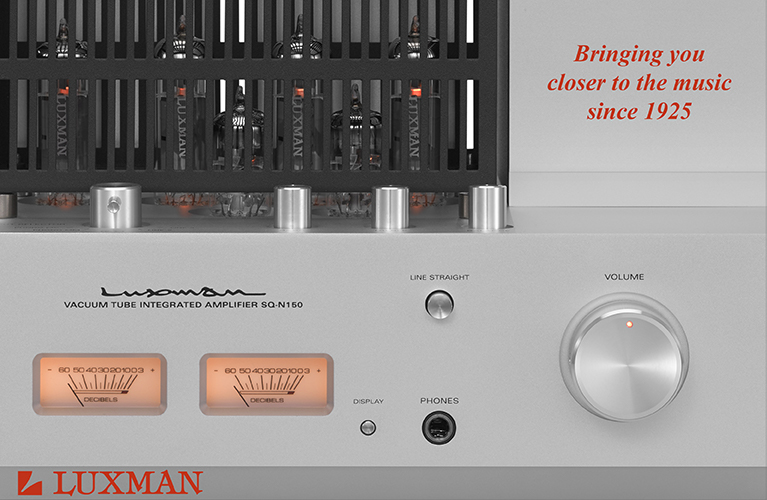Note: Measurements can be found through this link.
 Bryston Ltd., of Peterborough, Ontario, Canada, produces not only amplifiers, preamplifiers, and digital source components, but also power conditioners, speakers, and cables; recently, they added a turntable to their product line. But for me, Bryston will always be, first and foremost, a maker of high-quality amplifiers. The company has been manufacturing power amps since the mid-1970s, and the subject of this review, the 4B3, has been in continuous production in various versions since 1976, when it debuted as the 4B.
Bryston Ltd., of Peterborough, Ontario, Canada, produces not only amplifiers, preamplifiers, and digital source components, but also power conditioners, speakers, and cables; recently, they added a turntable to their product line. But for me, Bryston will always be, first and foremost, a maker of high-quality amplifiers. The company has been manufacturing power amps since the mid-1970s, and the subject of this review, the 4B3, has been in continuous production in various versions since 1976, when it debuted as the 4B.
Bryston’s current line of amplifiers, the Cubed models (hence the superscript 3 in the model names), comprise stereo and monaural power amplifiers and an integrated amp; the 4B3 is the second-most-powerful stereo Cubed model. When approached about the possibility of evaluating this latest iteration of the classic 4B, I quickly agreed.
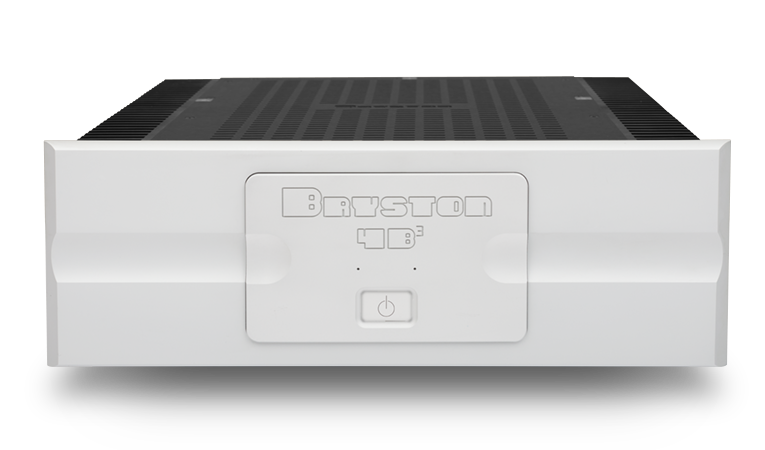
Building blocks
The 4B3 retails for $5695 USD -- a far cry from the original 4B’s price of a little over $1000, though not when adjusted for inflation: using the Bureau of Labor Statistics’ CPI Inflation Calculator, $1000 in 1976 is equivalent to $4361.38 today. But other than the model name and the distinctive faceplate, subtly updated for the Cubed series, this amp is nothing like the 4B of 1976 -- there are even substantial differences between it and its immediate predecessor, the 4B SST2.
Although the 4B3’s specifications are broadly similar to the 4B SST2’s, Bryston claims many improvements. Most notable is the 4B3’s new input stage, which Bryston says is extremely linear, with very high gain and very low distortion. This new, patented amplifier and signal filter circuit were developed in conjunction with the late Dr. Alexandru Salomie; Bryston says they improve the rejection of common-mode, EMI, and RFI noise.
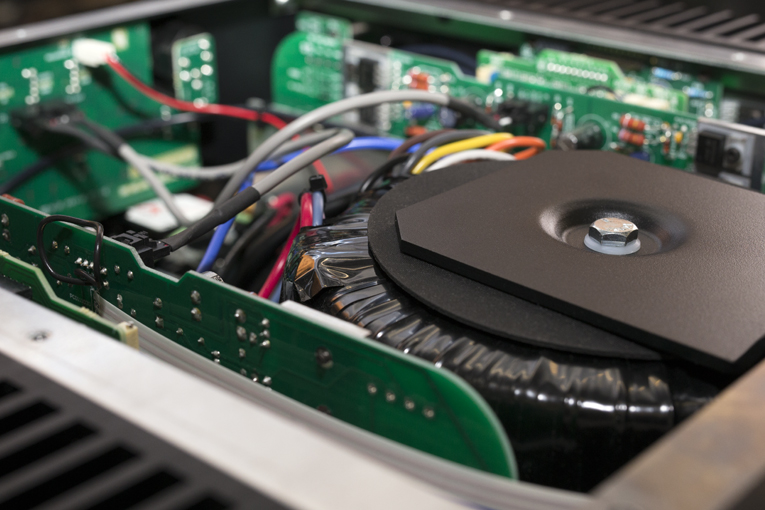
Inside, the 4B3 is a neatly laid-out design consisting primarily of circuit boards with little point-to-point wiring. Like the 4Bs before it, the 4B3 is a dual-mono, solid-state amplifier, with two separate power supplies that include two large, stacked toroidal transformers. It uses Bryston’s Quad Complementary output stage, which Bryston claims combines the sonic advantages of a class-A output stage and the efficiency of a class-AB output stage with low distortion and linear operation. Other improvements are said to make the 4B3 even quieter and more linear than the 4B SST2. The 4B3 is specced to deliver 300Wpc into 8 ohms or 500Wpc into 4 ohms, or it can be bridged for a mono output of 900Wpc into 8 ohms -- the same as the 4B SST2. Bryston claims that the 4B3’s total harmonic distortion plus noise is equal to or less than 0.005% from 20Hz to 20kHz at 300W output.
Like all Bryston amps, my sample of the 4B3 was burned in at the factory for 100 hours and tested extensively; included with it was a printout of those measurements, as would be provided to any customer. According to this sheet, the review sample’s distortion rises only slightly at the amp’s full rated output: from around 0.001% at 20Hz to just under 0.004% at 20kHz. Measured at its balanced inputs, with a 2V input and 100W output, the noise was -119dB from 20Hz to 20kHz -- very impressive.
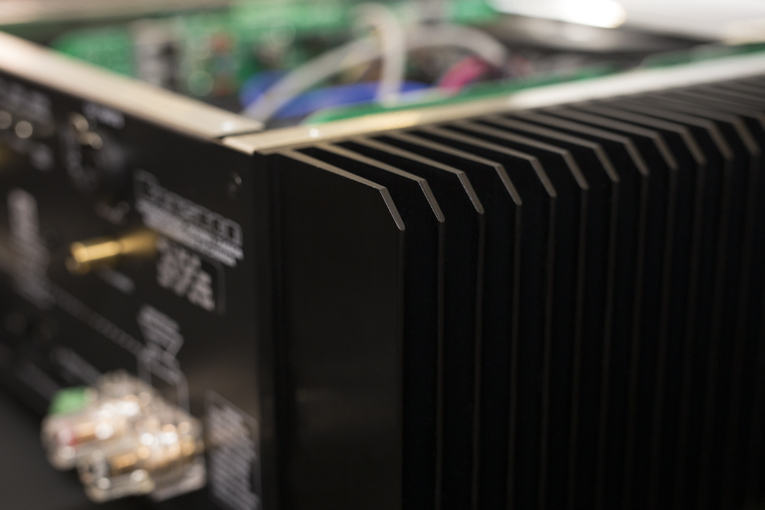
The 4B3’s build quality is exceptional though not over the top, as with some ultra-expensive high-end gear. The chassis is extremely solid, with heavy-duty heatsinks running the full length of each side panel. The 12mm-thick faceplate is available in black or silver, and has a central inset plate that bears the familiar, engraved Bryston logo. Below that are the power/standby button, and an LED for each channel that glows green for normal operation, red or orange to indicate various fault conditions. The edges of the faceplate and front handles are more rounded than those of previous 4Bs, and the handles are part of the 19”W faceplate. A 17”W faceplate, without handles, is also available. My review sample was outfitted with the 19”W faceplate in silver, which I thought extremely handsome in a stoic, industrial sort of way -- this amp is attractive enough, but looks as if it means business.
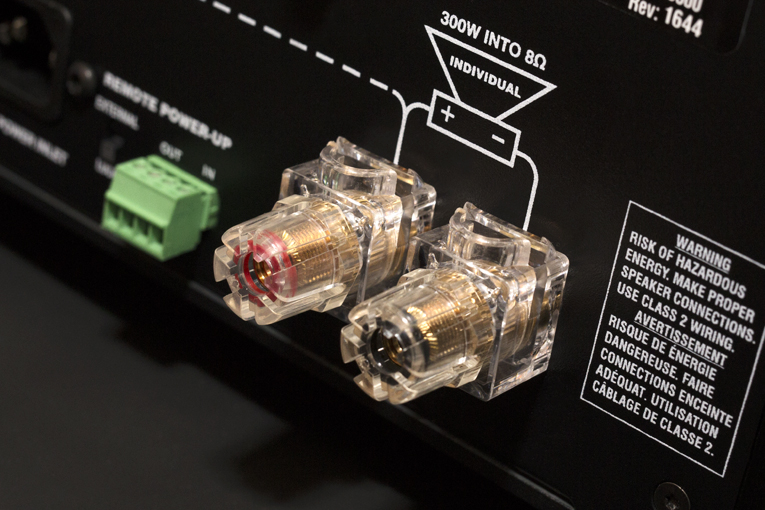
The 4B3’s rear panel is populated with single-ended RCA inputs, balanced inputs that accept both XLR and 1/4” phone plugs, and large five-way speaker binding posts. There are also switches to select between the single-ended and balanced inputs, set the gain to 23 or 29dB, and switch between stereo and bridged-mono modes. A voltage trigger input and output are also included for full-system control, as well as a switch that can be set to External for remote power-up. An IEC power inlet is provided for the supplied power cord, and an LED to indicate whether power is present and whether it’s 50 or 60Hz. What appears to be a mains power rocker switch is actually a master circuit breaker.
With the wider faceplate, the 4B3 measures 19”W x 6.3”H x 16.2”D and weighs 63 pounds.
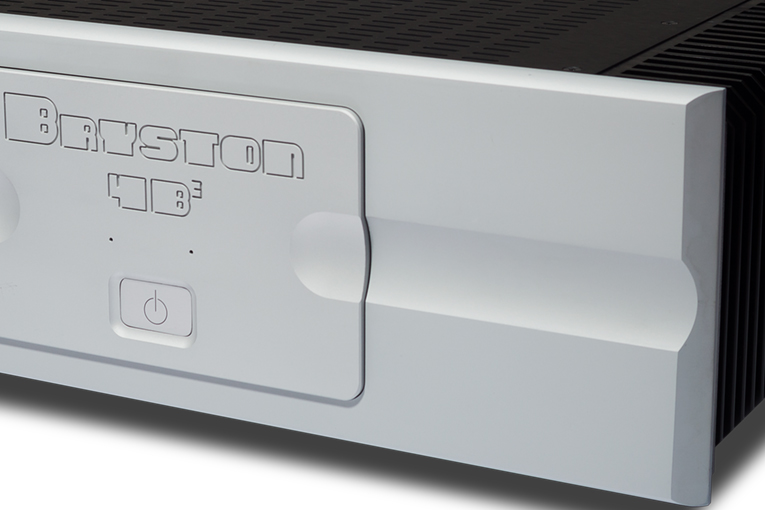
Setup
I used the Bryston 4B3 primarily with an Oppo BDP-105 universal Blu-ray player, used as both a DAC and preamp, connected to its stereo XLR outputs. The speakers used were MartinLogan’s Masterpiece Classic ESL 9s or KEF’s R900s. After plunking down the dense, relatively compact 4B3 on the floor between my speakers, I connected it to the rest of my system with an assortment of Nordost and AudioQuest interconnects and speaker cables, Essential Sound Products power cords, a Zero Surge surge suppressor, and a Blue Circle Audio power conditioner. I then followed the startup procedure outlined in the well-laid-out manual, which involves setting the 4B3’s various switches in a particular order, and watched as its front LEDs flashed, then glowed steady green to indicate fault-free performance. I left the amp powered up for the entire review period; it functioned without incident throughout that time.
Cubic function
Fellow-writer Doug Schneider’s reference system at one point included a Bryston 4B SST2, and if it sounded anything like what I heard from the 4B3, I can understand why. I heard sound that was at once brawny and precise, yet very subtle and refined when the music required it. I’ve said similar things about various amplifiers in the past, but the Bryston was truly remarkable in how it sacrificed little, if any, power output while retaining an extremely sophisticated and nuanced sound that I hadn’t thought possible for $5695 in 2017 dollars.
For example, the sound of the 4B3 was intense with Yello’s newest album of electronica, Toy (16-bit/44.1kHz FLAC, Universal). The deep synth chords at the opening of “Dialectical Kid” were rendered with such tautness and specificity that it sounded as if these obviously artificial instruments were actually present in my room, though I knew this couldn’t be true, and the Swiss duo’s robotic vocals were eerie and disembodied in a strangely convincing way. The diverse electronic percussion bounced wildly between the speakers without ever losing its razor-sharp imaging, creating an enveloping and holographic soundstage. The rapid-fire sound of “Lost in Motion” was a real treat -- Fifi Rong’s mesmerizing singing, framed by the frenetic instruments, laid out before me a vast soundscape.
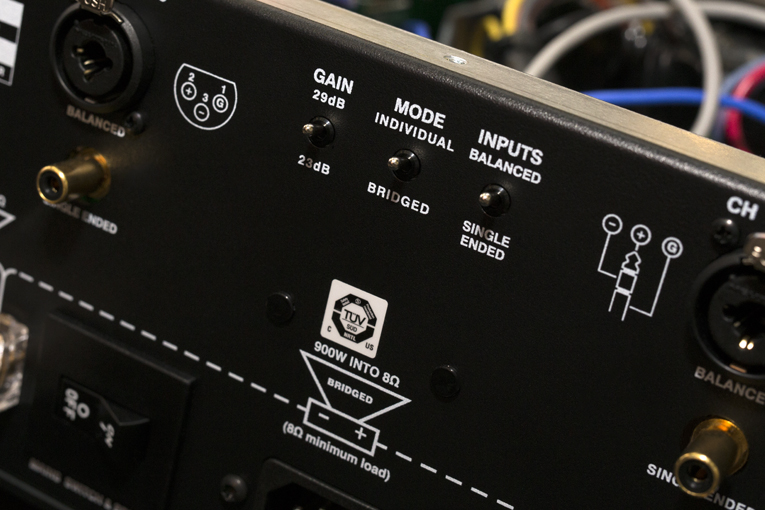
Depeche Mode’s latest, Spirit: Deluxe (16/44.1 FLAC, Mute/Sony), is another audiophile showcase, with plenty of dense, rhythmic bass and a deep, wide soundstage. Through the 4B3, it sounded fantastic. “So Much Love (Machine Mix)” had a driving beat with real kick, and the synthesizer effects filled my room fully and solidly, without overwhelming it. The vocals on many of this album’s tracks are heavily processed to sound slightly distorted, but I could still make out the words with ease, so clear was the 4B3’s sound.
As intense as the sound could be with the 4B3, there was still great ease and smoothness. The vocals in “Somewhere, Somebody,” from Jennifer Warnes’s The Hunter (SACD/CD, Private/Sony 10073), were as sweet and relaxed as I’ve heard them with any amp in my system -- I could hear every inflection and nuance in the intertwining male and female voices. Even at extremely high volumes, Warnes’s voice never became hard or lost its poise in “Rock You Gently.” The bass, which is very low in frequency but mixed at a fairly moderate level, was absolutely rock solid -- not at all vague or indistinct, as it can be with amps that lack the 4B3’s iron grip on the lows. And when I say solid, I mean so solid that the lows -- in fact, the entire soundstage -- was locked in to absolute focus, with no hint of ambiguity in the imaging.
And was this amp ever quiet. With no signal playing, I had to put my ear right next to the tweeter of one of my KEF R900s before I could hear any hiss. In my system, with most amps, I can usually hear some sort of background noise from a few inches away. Listening to the famous medley of “Somewhere Over the Rainbow” and “What a Wonderful World,” from Israel Kamakawiwo‘ole’s Facing Future (16/44.1 FLAC, Mountain Apple), Iz’s voice and ukulele emanated from a totally dark, silent background, giving the music incredible presence and making for a wonderfully intimate and personal experience. With an amp as quiet as the 4B3, I could make out the sound of individual strings as they were strummed, and easily hear the gentle but distinctive taps of Iz’s fingers on the ukulele after each strum.
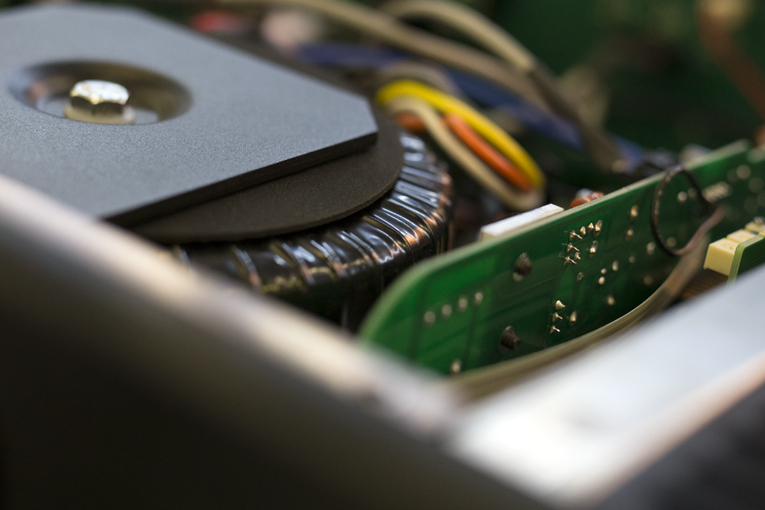
Amplifiers with a forgiving sound are sometimes described as being “musical” -- they can make less-than-immaculate recordings sound more pleasant, typically at the expense of detail and dynamics. In contrast, the Bryston 4B3 was crazy transparent and powerful while still sounding extremely musical. A perfect example of this was a recording I’m very familiar with, Cyndi Lauper’s The Body Acoustic (16/44.1 FLAC, Sony). When Lauper’s voice soars in “True Colors,” the 4B3 still had plenty of control, and enough headroom that her voice didn’t become compressed. Many “musical” amps gloss over those dynamic peaks and soften her voice, making it sound more smooth -- which most listeners will prefer to the compression or hardness of amps that can’t handle a wide dynamic range. With the Bryston, there was no change in the sound of Lauper’s voice throughout this track, just neutrality -- and, thus, authentic musicality -- her voice soared, sometimes straining, occasionally exhibiting a hint of sibilance, just as it should in this recording. None of this seemed unnatural; and let me experience and enjoy the uniqueness of her voice and the expressiveness of her singing.
A recording I’ve recently rediscovered is Emmylou Harris’s Wrecking Ball: Deluxe Edition, a collaboration with influential producer, songwriter, and musician Daniel Lanois (16/44.1 FLAC, Nonesuch). This album is every bit as good as Lanois’s work on albums by U2, Robbie Robertson, Peter Gabriel, and Bob Dylan. The transparency of the 4B3 let me hear further into this recording than has any other amp I’ve had in my system -- its retrieval of detail was astonishing. Although the amp was remarkably transparent, the sound was perfectly neutral and never harsh. The electric guitar and kick drum in Lanois’s “Where Will I Be” are recorded with reverb that can make them sound a little grungy. Through the 4B3, they still sounded somewhat distant, but I could easily differentiate them from each other and from the other instruments, nor did they obscure the more precisely recorded snare. There was also a beautiful wispy quality to Harris’s vibrato that was stunning in its lucidity. The cover of Gillian Welch’s “Orphan Girl” is a cleaner-sounding recording, with a sparkling tambourine that begins the track and maintains a precisely steady rhythm throughout. Even with the multiple, intertwined drums, I was able to follow the complex beat with ease. But whether it was the lush, densely packed sound of “Where Will I Be” or the crisper sound of “Orphan Girl,” the Bryston 4B3 had an uncanny ability never to emphasize any aspect of the sound at the expense of the others -- its sound was absolutely neutral.
Comparison
My reference power amplifiers, Anthem’s Statement M1 monoblocks ($7000/pair), are 1000Wpc class-D powerhouses that, like the Bryston 4B3, have a remarkably neutral sound. But as fellow SoundStage! reviewer Jason Thorpe rightly put it, the Anthem sounds sophisticated, with a “very slightly rich midrange” -- and this was one of the main differences between it and the Bryston. Older recordings, such as Stevie Nicks’s Bella Donna: Deluxe Edition (24/96 FLAC, Rhino Atlantic/HDtracks), sounded fantastic through both. The electric-guitar chords that begin “Edge of Seventeen” sounded clean and unashamedly raw, as did Nicks’s voice -- I was able to make out her words very clearly, even on this vintage recording. However, with the Statement M1s, her voice was just a tad richer and more rounded. Nicks’s wonderfully distinctive voice is a lot of things, but it’s neither particularly smooth nor sweet, so it was difficult to say if the Anthems’ slightly refined reproduction of it was better than the Bryston’s, or just different. Overall, the Anthems’ ever-so-faintly-warm midrange was enticing, but the Bryston’s slightly more transparent sound allowed me to hear more detail.
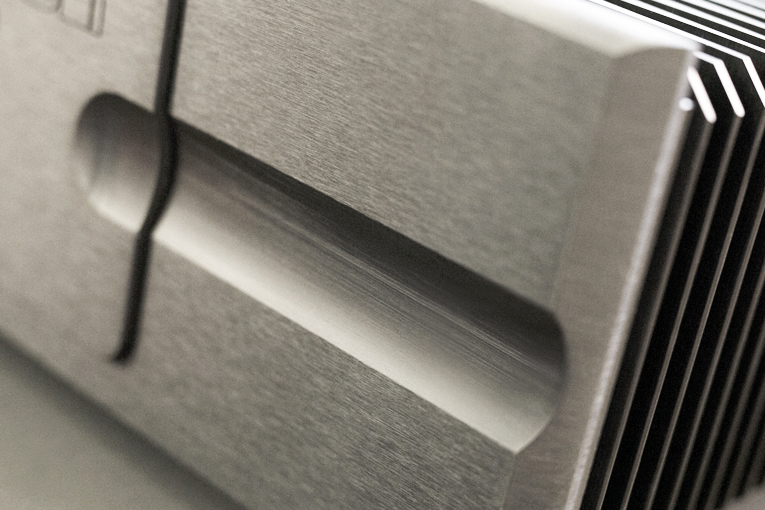
Just for fun, I cranked up Boney M.’s Diamonds: 40th Anniversary Edition (16/44.1 FLAC, Sony). With the Bryston, I was able to play the KEF R900s so loud that I feared for their safety, though I heard no clipping, or even compression of any kind. With their much, much higher power output, the Anthems have no problems driving the KEFs to these insanely high levels -- but much to my surprise, the Bryston sounded a little clearer at extreme volumes, and was better able to sort out the voices, thumping disco bass, and clapping, all while maintaining a rock-solid soundstage.
Male and female voices sounded more distinct through the Bryston, which also rendered men’s speaking voices more realistically. The Anthems blended each syllable slightly into the next, rather than separating them as clearly as the Bryston 4B3. The clearness of the Bryston made it seem subjectively as powerful as the Anthems -- it, too, never showed any signs of stress, and its transparency remained, regardless of the output level. At more moderate volumes, that hint of warmth in the Anthems’ sound did give voices a pleasing weight in contrast to the Bryston’s refreshing bell-like clarity -- but with most recordings, I found myself preferring what I heard from the 4B3.
Exponential value
Those who yearn for the liquid warmth of tubes, or other colorations, might not be enamored of the sound of the Bryston 4B3, which is by-the-book neutral. I was blown away by its amazing transparency, absolute control, and very smooth, very linear sound. In my system, its sound was nearly flawless -- no matter what I listened to, I couldn’t imagine the sound being much better, at least in terms of accurate reproduction.
If I were in the market for a new amp, I’d buy the Bryston 4B3 without hesitation. It is without a doubt a true classic, continuing in the tradition of the legendary Bryston B amps that came before it. With virtually faultless sound and the ability to drive just about any speaker with ease, the 4B3 may well be the best value today in a high-end, high-powered, solid-state amplifier. To better its combination of power output and finesse, you’ll likely have to pay much more.
. . . Roger Kanno
rogerk@soundstagenetwork.com
Associated Equipment
- Speakers -- KEF R900, MartinLogan Masterpiece Classic ESL 9
- Amplifiers -- Anthem Statement M1 (monoblocks)
- A/V processor -- Anthem Statement D2
- Sources -- Oppo Digital BDP-105 universal BD player, Asus VivoBook X200MA computer running Windows 10 and foobar2000, Bel Canto Design mLink USB converter, AudioQuest JitterBug
- USB cable -- AudioQuest Carbon
- Interconnects -- Nordost Quattro Fil
- Speaker cables -- Nordost Super Flatline Mk.II
- Power cords -- Essential Sound Products MusicCord-Pro ES
- Power conditioners -- Blue Circle Audio PLC Thingee FX-2 with X0e Low-Frequency Filter Module, Zero Surge 1MOD15WI
Bryston 4B3 Stereo/Mono Amplifier
Price: $5695 USD.
Warranty: 20 years parts and labor.
Bryston Ltd.
677 Neal Drive
Peterborough, Ontario K9J 6X7
Canada
Phone: (800) 632-8217, (705) 742-5325
Fax: (705) 742-0882
Website: www.bryston.com






















